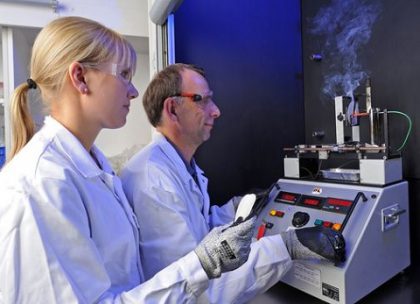
Achieving flame-retardant properties without red phosphorus, when: LANXESS offers alternatives to polyamide 66 compounds containing red phosphorus; Polyamide 6 and 66 compounds with halogen-free flame-retardant packages and Excellent thermal and mechanical performance
Potential for light colors, no contact corrosion
Unlike their counterparts containing red phosphorus, the compounds from LANXESS can be given any color, including light shades. This is a point in their favor as color is an important element in design and is used in many applications as a feature of component safety markings. A further strength of the compounds is that metals are much less prone to corrosion when they come into contact with their flame retardant additives in warm, moist environments. Moreover, the compounds are also easier to handle in terms of occupational hygiene.
Improved tracking resistance
Polyamide 66 compounds with flame-retardant mechanisms based on red phosphorus are usually available with glass fiber content of between 20 and 40 percent. Alternative materials to compounds with glass fiber content of 25 percent include Durethan AKV25FN04 polyamide 66 and especially Durethan BKV25FN04 polyamide 6. Both exhibit similar tensile moduli, strength at break and elongation at break, Charpy impact strength and densities. At 600 volts, their tracking resistance (comparative tracking index CTI A, IEC 60112) is somewhat higher. Durethan AKV25FN04 is particularly suited to applications that call for high heat distortion temperatures or V-0 classification at a specimen thickness of 0.4 millimeters in the UL 94 flammability test from US testing organization Underwriters Laboratories Inc. (UL). Durethan BKV25FN04 is classified under V-0 at a specimen thickness of 0.75 millimeters. Both compounds are f1-listed by UL (starting at 0.75 millimeters). This means that they are also suitable for components that will be outdoors and subject to the effects of water and UV radiation, such as connectors for photovoltaic systems.
Better flame-retardant properties
Read more at: SOURCE













